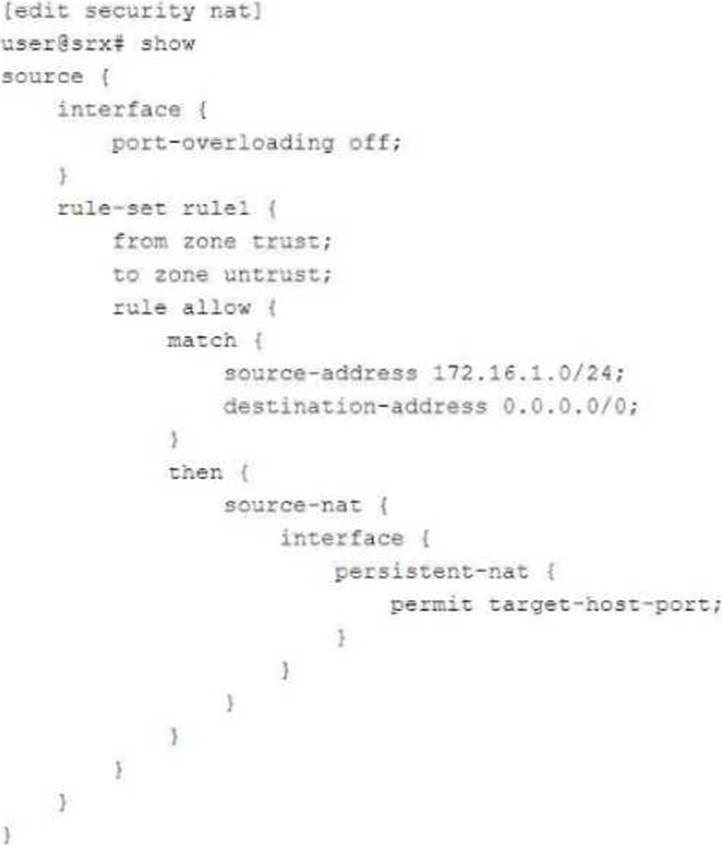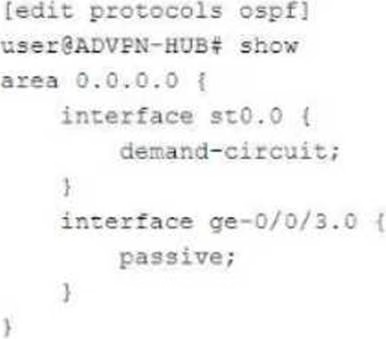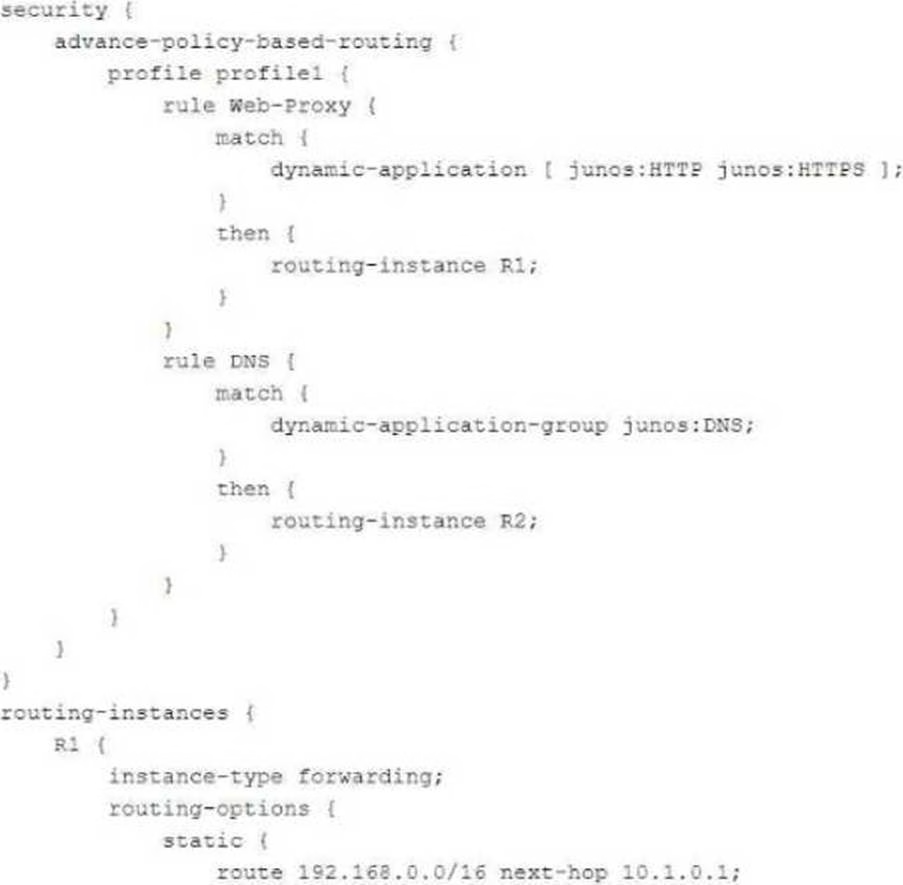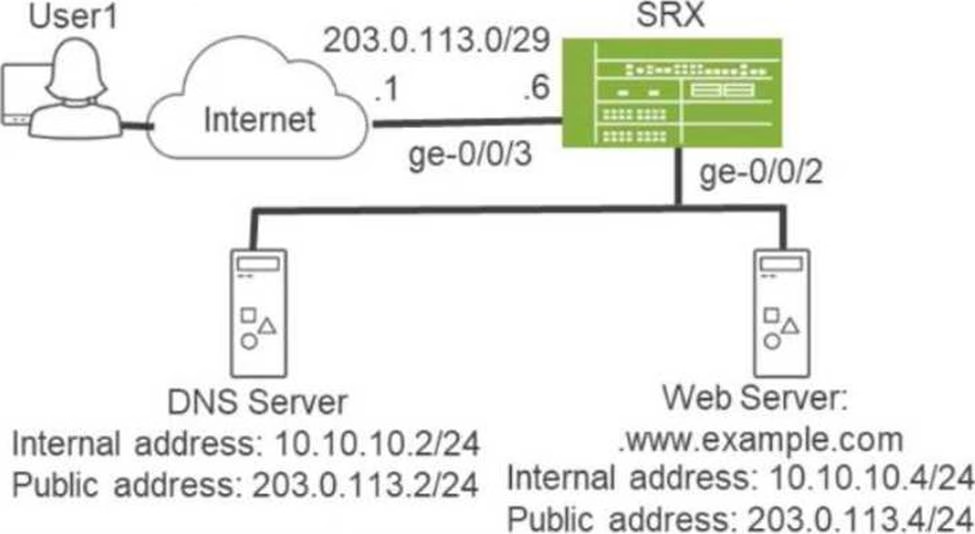Juniper JN0-637 Security, Professional (JNCIP-SEC) Online Training
Juniper JN0-637 Online Training
The questions for JN0-637 were last updated at Apr 22,2025.
- Exam Code: JN0-637
- Exam Name: Security, Professional (JNCIP-SEC)
- Certification Provider: Juniper
- Latest update: Apr 22,2025
You have deployed automated threat mitigation using Security Director with Policy Enforcer, Juniper ATP Cloud, SRX Series devices, Forescout, and third-party switches.
In this scenario, which device is responsible for communicating directly to the third-party switches when infected hosts need to be blocked?
- A . Forescout
- B . Policy Enforcer
- C . Juniper ATP Cloud
- D . SRX Series device
Referring to the exhibit,

Which two statements are correct about the NAT configuration? (Choose two.)
- A . Both the internal and the external host can initiate a session after the initial translation.
- B . Only a specific host can initiate a session to the reflexive address after the initial session.
- C . Any external host will be able to initiate a session to the reflexive address.
- D . The original destination port is used for the source port for the session.
You are using ADVPN to deploy a hub-and-spoke VPN to connect your enterprise sites.
Which two statements are true in this scenario? (Choose two.)
- A . ADVPN creates a full-mesh topology.
- B . IBGP routing is required.
- C . OSPF routing is required.
- D . Certificate-based authentication is required.
You want to create a connection for communication between tenant systems without using physical revenue ports on the SRX Series device.
What are two ways to accomplish this task? (Choose two.)
- A . Use an external router.
- B . Use an interconnect VPLS switch.
- C . Use a secure wire.
- D . Use a point-to-point logical tunnel.
An ADVPN configuration has been verified on both the hub and spoke devices and it seems fine.
However, OSPF is not functioning as expected.

Referring to the exhibit, which two statements under interface st0.0 on both the hub and spoke devices would solve this problem? (Choose two.)
- A . interface-type p2mp
- B . dynamic-neighbors
- C . passive
- D . interface-type p2p
You have deployed an SRX Series device at your network edge to secure Internet-bound sessions for your local hosts using source NAT. You want to ensure that your users are able to interact with applications on the Internet that require more than one TCP session for the same application session.
Which two features would satisfy this requirement? (Choose two.)
- A . address persistence
- B . STUN
- C . persistent NAT
- D . double NAT
Referring to the exhibit,

Which statement about TLS 1.2 traffic is correct?
- A . TLS 1.2 traffic will be sent to routing instance R1 but not forwarded to the next hop.
- B . TLS 1.2 traffic will be sent to routing instance R1 and forwarded to next hop 10.1.0.1.
- C . TLS 1.2 traffic will be sent to routing instance R2 but not forwarded to the next hop.
- D . TLS 1.2 traffic will be sent to routing instance R2 and forwarded to next hop 10.2.0.1.
You have an initial setup of ADVPN with two spokes and a hub. A host at partner Spoke-1 is sending traffic to a host at partner Spoke-2.
In this scenario, which statement is true?
- A . Spoke-1 will establish a VPN to Spoke-2 when this is first deployed, so traffic will be sent immediately to Spoke-2.
- B . Spoke-1 will send the traffic through the hub and not use a direct VPN to Spoke-2.
- C . Spoke-1 will establish the tunnel to Spoke-2 before sending any of the host traffic.
- D . Spoke-1 will send the traffic destined to Spoke-2 through the hub until the VPN is established between the spokes.
Referring to the exhibit,

which two statements about User1 are true? (Choose two.)
- A . User1 has access to the configuration specific to their assigned logical system.
- B . User1 is logged in to logical system LSYS-1.
- C . User1 can add logical units to an interface that a primary administrator has not previously assigned.
- D . User1 can view outputs from other user logical systems.
Exhibit:

You are asked to ensure that Internet users can access the company’s internal webserver using its FQDN. However, the internal DNS server’s A record only points to the webserver’s private address.
Referring to the exhibit, which two actions are required to complete this task? (Choose two.)
- A . Disable the DNS ALG.
- B . Configure static NAT for both the DNS server and the webserver.
- C . Configure destination NAT for both the DNS server and the webserver.
- D . Configure proxy ARP on ge-0/0/3.
Latest JN0-637 Dumps Valid Version with 115 Q&As
Latest And Valid Q&A | Instant Download | Once Fail, Full Refund

